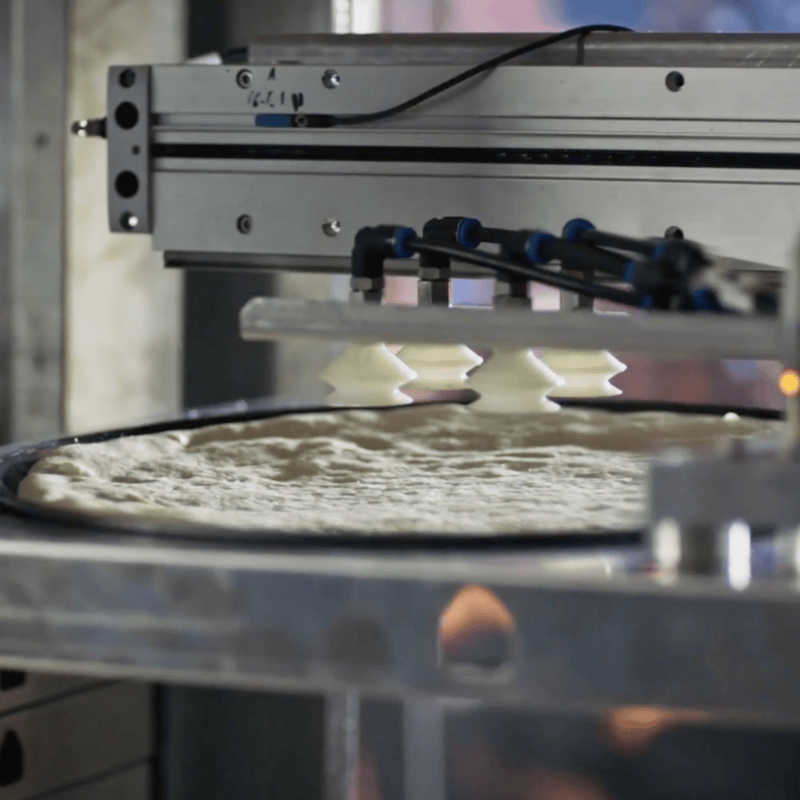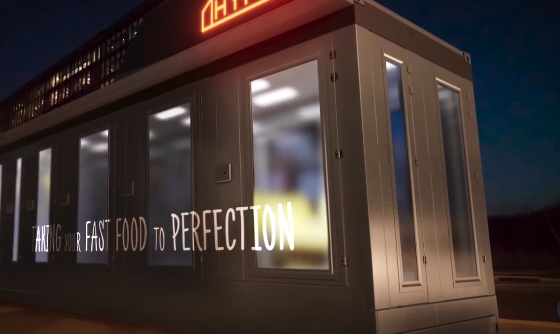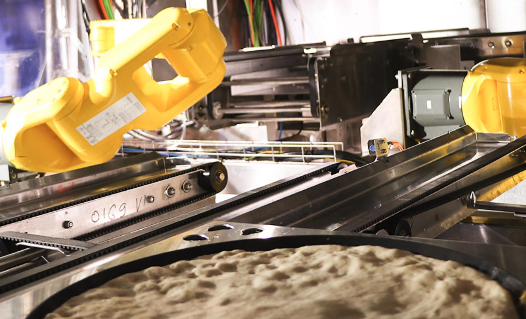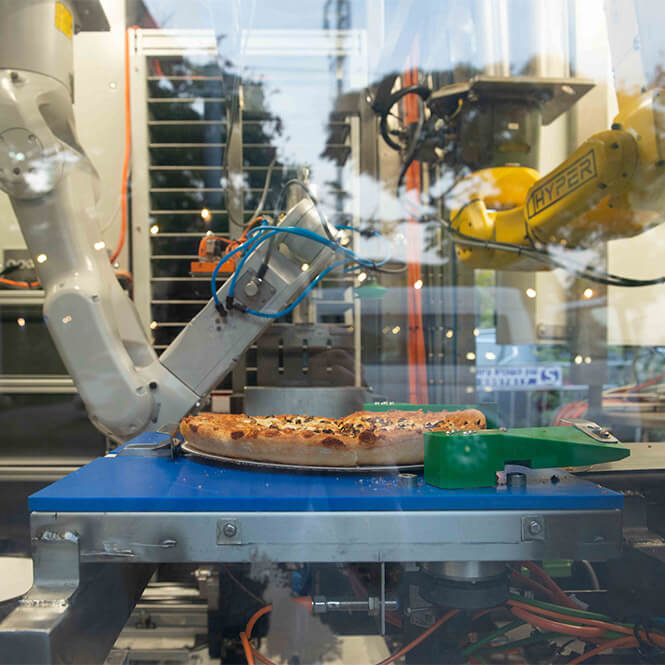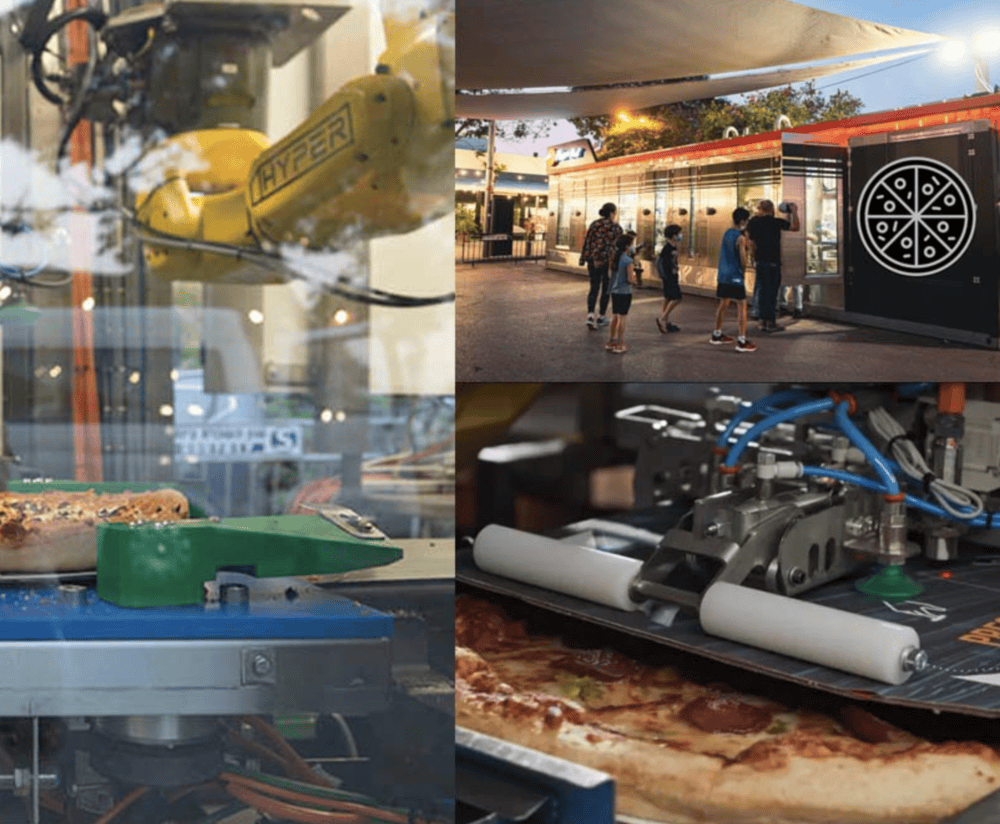Have you treated square footage as an immutable limit, when it is often just a design problem waiting for smarter tools?
You are under pressure to add menu variety, launch virtual brands, and keep delivery customers happy, all without the luxury of expanding kitchen footprints. Many operators assume more space is the only way to add SKUs, but that assumption misses a practical shift: modular menu engineering combined with compact, autonomous robotics can multiply production per square foot without new real estate. You can reassign stations more often, orchestrate recipes with software, and deploy plug-and-play robotic modules that turn throughput and precision into leverage.
Let’s unpack the opportunity you may be overlooking. You will see how a standardized containerized kitchen, orchestrated by recipe engines and monitored by machine vision, lets you run multiple concepts from the same physical footprint. You will get a clear pilot roadmap, concrete KPIs to track, and practical examples that show how to manage risk, compliance, and cybersecurity while increasing SKU density. Hyper-Robotics and other early adopters have documented pilot results and technical approaches that prove feasibility, and you will find those references integrated into the guidance below. For context on industry trends and the driver behind this shift, see the National Restaurant Association’s materials on workforce and automation, which explain why automation has become a priority for restaurant executives (National Restaurant Association, 2024) and why you should be testing these systems as part of your growth playbook.
Table of contents
- What you will read about
- Introduction (the overlooked opportunity)
- Leveraging the unseen
- Technique 1: small, easy-to-implement actions that lead to big gains without extra effort
- Technique 2: hidden strategies that achieve results with minimal investment
- Implementation roadmap: pilot to scale
- Measuring ROI and business case
- Risk management and compliance
- Key takeaways
- FAQ
You probably already track throughput, labor hours, and ticket times, but you may not be measuring the right levers for menu expansion. Instead of treating a tiny footprint as an immutable constraint, view it as a platform problem. Small changes to recipe design, equipment reuse, and control software yield outsized returns. For example, containerized and compact units are now engineered to compress robotics, sensors, and auto-clean systems into standardized deployments. Hyper-Robotics documents both compact 20-foot modules and full 40-foot container configurations that integrate machine vision and hundreds of sensors to maintain precision and reduce manual tasks, enabling broader SKU sets from less space (Hyper-Robotics knowledge base).
You will read specific, low-friction techniques that scale from a single test site to a cluster strategy. You will also see how operators minimize capital risk, measure pilot success, and protect food quality while adding variety. The rest of the article gives you a playbook to increase SKU count, shave changeover time, and launch delivery-first concepts in a single quarter, if you act deliberately.
Leveraging the unseen
You want menu variety without a building project. The unseen levers are process design, recipe modularity, orchestration software, and cluster routing. These elements shrink changeover time, increase SKU density, and let delivery-first brands proliferate from the same footprint. Evidence from recent deployments shows that combining software orchestration with modular hardware is the multiplier you need to scale SKU variety with controlled capital.
Technique 1: small, easy-to-implement actions that lead to big gains without extra effort
Design modular recipes
You will increase usable SKUs by designing dishes from common building blocks. Build a set of interchangeable bases, proteins, sauces, and finishing steps. For example, a grilled protein station can serve five sandwich SKUs and two salad proteins with the same tooling by changing seasoning and finishing instructions in software rather than changing physical equipment. That is how operators initially run four to eight SKUs in a compact 20-foot module during pilots, then expand as recipes standardize (Hyper-Robotics knowledge base).

Standardize ingredient formats
Portion control is a multiplier. Pre-portioned proteins, uniform sauce cartridges, and identical foldable packaging reduce changeover friction. Pre-formatted ingredients reduce the number of unique tools you need to manage and increase predictability. The immediate effect is less human intervention and fewer errors, which is critical for delivery reliability. Industry guidance on foodservice automation stresses that the biggest wins come from reducing variation upstream in ingredient handling (National Restaurant Association, 2024).
Reassign stations through scheduling
You can schedule the same station to perform different tasks by time-blocking or demand-driven switchover. For example, a frying station can produce breakfast items in the morning and dinner-focused sides in the evening, with an automated cleaning cycle between segments. This time segmentation multiplies SKUs without adding hardware and is a standard tactic in pilots described by containerized-kitchen vendors.
Automate quick checks
Machine vision and sensors let you keep quality tight while increasing output. Some deployments describe systems with dozens of cameras and over 100 sensors to verify portions and cook states in real time, reducing rework and waste (Hyper-Robotics knowledge base). Vendors such as Miso Robotics also show how vision and process control improve consistency and reduce labor for repetitive tasks, which supports greater SKU complexity without sacrificing quality (Miso Robotics case studies).
Technique 2: hidden strategies that achieve results with minimal investment
Use multi-tool robotics instead of single-purpose devices
Rather than buying a new appliance for every item, use programmable end-effectors and universal stations. A single robotic arm with quick-change heads can perform grilling, flipping, and plating with software-driven tool swaps. That compresses equipment requirements and lets you test new SKUs without a capital rewrite. Early adopters report that tool-change workflows reduce the need for dedicated appliances, lowering both capital expenditure and footprint.
Orchestrate recipes with software
Recipe orchestration is the difference between adding one SKU and adding a dozen. When batching, timing, and inventory are controlled by a central engine, changeovers are predictable and fast. You can orchestrate overlapping runs and shift capacity between SKUs on the fly. Autonomous units from modern providers combine recipe orchestration, IoT telemetry, and auto-clean routines so you can switch production modes in minutes rather than hours. Business coverage of robotic kitchens highlights how orchestration software is the lever that unlocks multiple virtual brands on one platform (Business Insider coverage of robotic kitchens).
Leverage virtual brands and micro-shifts
Virtual brands let you reuse the same infrastructure to target different customer segments. Reserve low-demand meal windows for specialized menus and run shared capacity during peak hours. Many operators launch delivery-first concepts in this way, then expand successful SKUs to broader distribution. Real deployments show operators testing one virtual brand during off-peak windows to validate demand before wider rollout (Hyper-Robotics knowledge base).
Focus on real-time inventory and dynamic batching
You can shrink stock space while offering more SKUs by coupling real-time sales data to just-in-time production. Dynamic batching groups orders across SKUs to reduce cook cycles and accelerate throughput. That lets you offer more menu items without expanding refrigeration or prep areas. Industry trends indicate that real-time inventory integration is becoming a baseline expectation for high-throughput delivery operations (National Restaurant Association).
Cluster management and geographic load balancing
Think of compact units as micro-factories you can orchestrate as a cluster. When one unit reaches capacity, the system can route orders to a nearby module. That approach multiplies effective capacity without enlarging any single kitchen footprint. Hyper-Robotics emphasizes cluster orchestration in their technical materials, and operators use geographic routing to smooth peaks and improve average fulfillment times (Hyper-Robotics knowledge base).
Implementation roadmap: pilot to scale
Phase 0: discovery (2 to 4 weeks)
Map current menu, equipment, crew tasks, and cycle times. Establish baseline KPIs including throughput per hour, average time-to-plate, labor hours per order, and SKU contribution margins. Document spatial constraints and identify stations with the highest idle time that could be re-tasked. Use this baseline to build a minimum viable experiment.
Phase 1: pilot (6 to 12 weeks)
Deploy a single compact unit or retrofit a 20-foot module to run a small, modular menu and one virtual brand. Target four to eight SKUs initially. Measure accuracy, cook cycle times, waste, and labor delta. Expect the pilot to reveal small recipe changes that dramatically reduce changeover friction. Hyper-Robotics and other vendors recommend 6 to 12 week pilots to stabilize recipes and collect reliable KPIs (Hyper-Robotics knowledge base).
Phase 2: optimize (8 to 16 weeks)
Refine modular recipes for cross-utilization. Tune orchestration software to minimize queuing and reduce downtime between SKU runs. Expand virtual brand experiments during low-demand windows to test customer response. Use real-time telemetry to iterate quickly.
Phase 3: scale
Apply cluster management to coordinate multiple compact units. Use analytics to identify which SKUs scale well and which should be retired. Standardize dashboards and KPIs for replication across sites. Document playbooks for site setup, cleaning audits, and regulatory compliance so replication is predictable.
Measuring ROI and business case
Incremental revenue per SKU
Estimate check uplift from new SKUs and virtual brands. Model adoption rates conservatively during pilot and refine with live data. A simple three-year payback model tied to average check uplift and SKU adoption will show whether the concept merits rollout.
Labor cost delta
Measure labor hours per order before and after automation. Automated cleaning, portioning, and plating reduce headcount needs, and those savings compound over many sites. Industry reports on labor shortages and wage pressure make this lever urgent for executives who must maintain margins (National Restaurant Association).
Throughput and changeover improvements
Measure orders per hour and average changeover time between SKUs. Recipe orchestration and quick-change tooling are expected to reduce changeover time from hours to minutes in practice, shortening time-to-market for new items.
Waste and food cost improvements
Precision portioning and inventory forecasting reduce overproduction and spoilage. Track food cost percentage per SKU and aim for measurable improvements during initial optimization.
Time-to-market
Plug-and-play manufacturing and standardized container builds shrink rollout time for new menus or virtual brands. Shortening time-to-market accelerates the revenue curve for successful SKUs and reduces capital exposure.
Risk management and compliance
Protect food quality with validation
Run sensory panels and shelf-life validations for each new SKU. Automated systems control portions and temperatures, but human taste testing remains essential. Validate every recipe under production conditions and document outcomes for audit trails.
Document hygiene and cleaning cycles
Automated cleaning reduces manual labor, but keep records and third-party audits. Use platform telemetry to produce audit-ready logs of cleaning cycles, temperature controls, and access events to satisfy health inspectors and corporate compliance teams.
Secure IoT and software pipelines
Robotic kitchens are software-driven platforms. Protect telemetry, recipe orchestration, and update channels with encryption, role-based access control, and secure over-the-air update pipelines. Plan incident response for software or network outages so menu availability degrades gracefully. For practical cybersecurity approaches in foodservice automation, follow established OT security practices and vendor guidance.
Regulatory and labeling compliance
When you run virtual brands, ensure labeling, allergen disclosures, and nutritional information are accurate for each SKU and each jurisdiction. Centralized menu management helps push consistent updates across clusters and reduces the risk of mislabeling.

Key takeaways
Actionable steps you can take this quarter
- Design modular recipes so multiple SKUs share bases, proteins, and finishing steps to multiply offerings without new equipment.
- Run a 6 to 12 week pilot using a compact robotic module, target 4 to 8 SKUs, and measure throughput, accuracy, and labor delta (Hyper-Robotics knowledge base).
- Use orchestration software to reduce changeover times, implement machine vision checks, and automate cleaning documentation (Business Insider, Miso Robotics).
- Launch one virtual brand as a test case during off-peak windows to validate demand and packaging workflows.
- Model ROI by combining incremental check size, labor savings, throughput gains, and reduced waste into a simple three-year payback scenario.
Final thought
You can increase menu variety without expanding kitchen space by redesigning recipes, reusing stations, and deploying compact automation, but the real leverage comes from orchestration and disciplined pilots. Which menu item will you test first to prove that more variety does not have to mean more square footage?
FAQ
Q: How many additional SKUs can I realistically support without expanding space?
A: Start with a conservative target of four to eight additional SKUs in a compact 20-ft module during your initial pilot. The real number depends on recipe complexity and cross-utilization of stations. As you standardize ingredient formats and use orchestration software to reduce changeover time, you can increase SKU density. Track throughput, changeover time, and waste closely so you scale without sacrificing quality.
Q: What are the fastest wins to free up space for new menu items?
A: The fastest wins are recipe modularity and standardizing portion formats. Convert unique prep steps into interchangeable bases and pre-portioned ingredients. Use programmable stations rather than single-purpose appliances. These changes require minimal hardware investment but deliver immediate reductions in tooling diversity and prep time.
Q: Will automation compromise taste and quality?
A: Automation improves consistency by eliminating human variation in portioning and cook time. You still need human taste testing and sensory validation when you add SKUs. Machine vision and sensors give you better control over final outputs, which often improves perceived quality. Maintain ongoing taste tests and customer feedback loops so you can iterate recipes.
Q: How long should a pilot last and what KPIs should I track?
A: Plan a six to twelve week pilot. Track orders per hour, time-to-plate, accuracy rate, waste percentage, labor hours per order, and average ticket. Include at least one customer-facing metric, such as delivery satisfaction score, and one operational metric, like changeover time between SKUs.
Q: How do virtual brands fit into this strategy?
A: Virtual brands let you monetize unused capacity and target different customer segments without new storefronts. Time-segment production windows for distinct menus, or use cluster routing to serve different brands from multiple compact modules. Ensure branding and packaging are distinct, and maintain accurate labeling for compliance.
About Hyper Food Robotics
Hyper Food Robotics specializes in transforming fast-food delivery restaurants into fully automated units, revolutionizing the fast-food industry with cutting-edge technology and innovative solutions.
Hyper-Robotics addresses inefficiencies in manual operations by delivering autonomous robotic solutions that enhance speed, accuracy, and productivity. Their robots solve challenges such as labor shortages, operational inconsistencies, and the need for round-the-clock operation, providing solutions like automated food preparation, retail systems, and kitchen automation.
